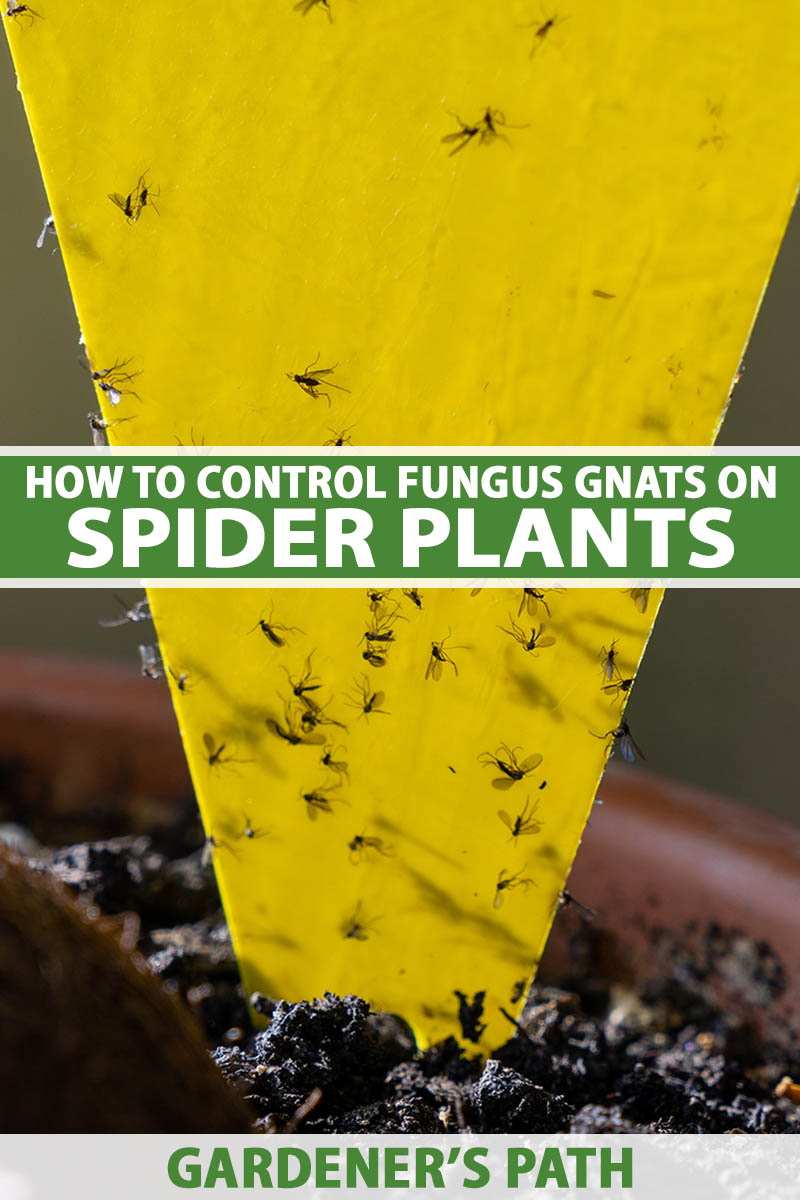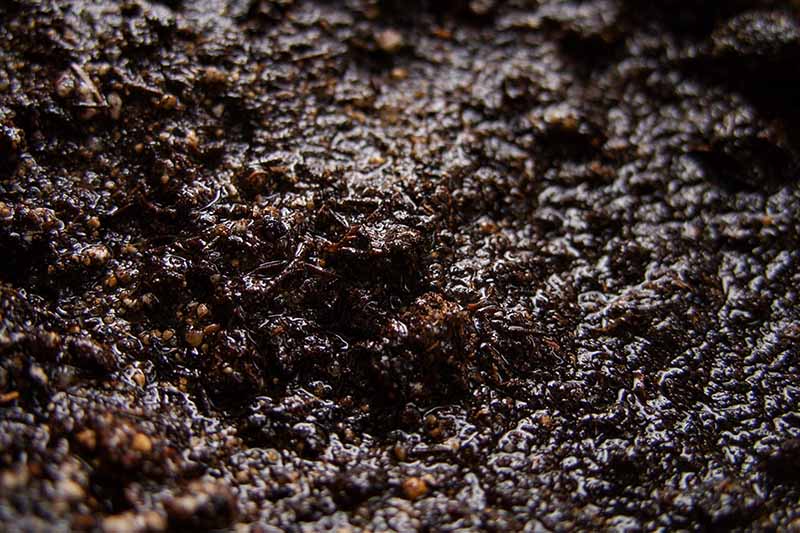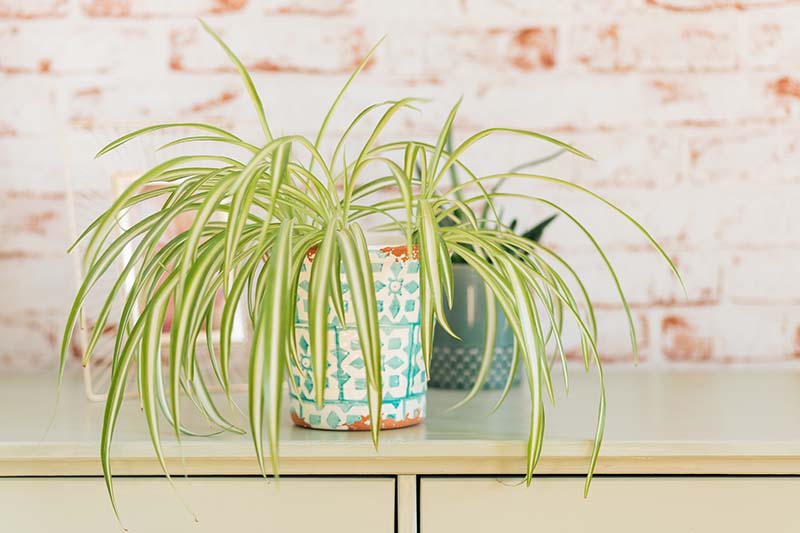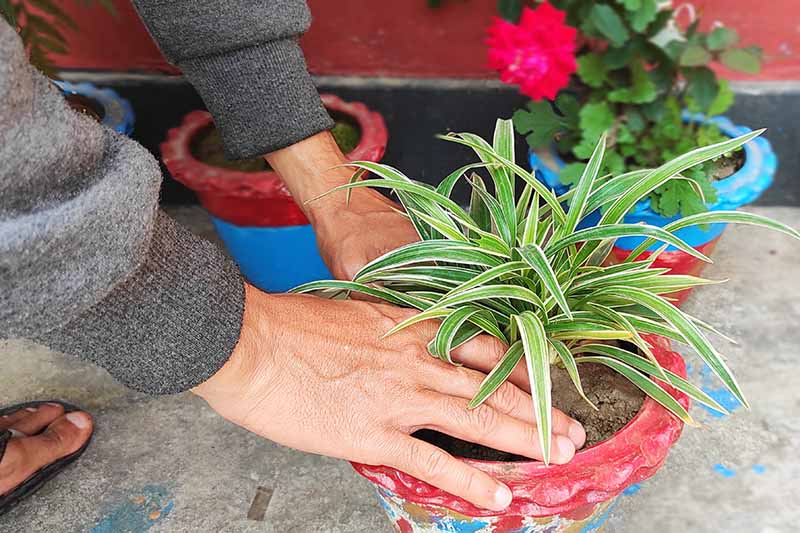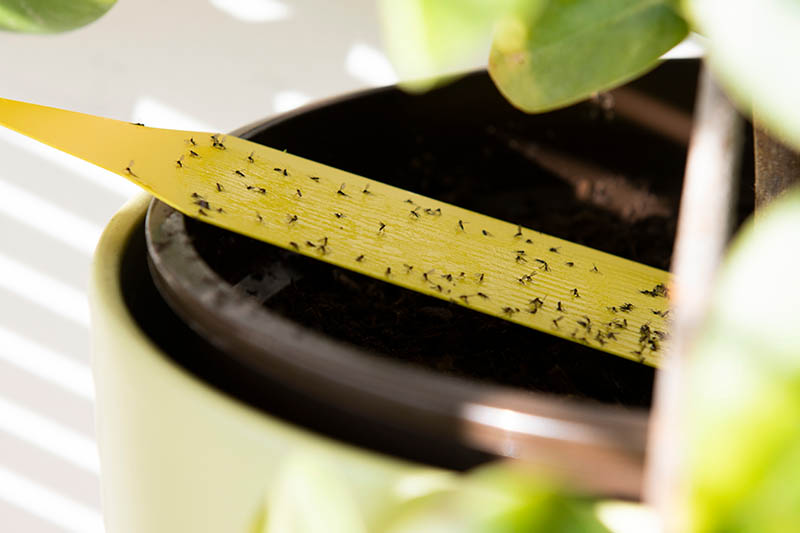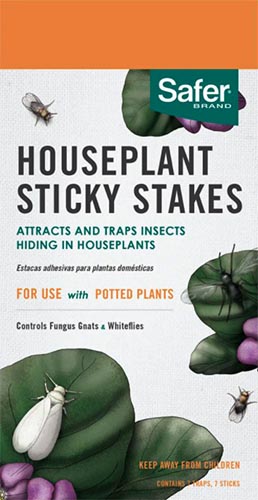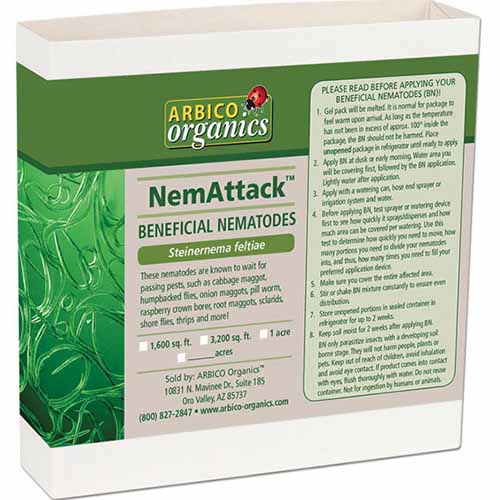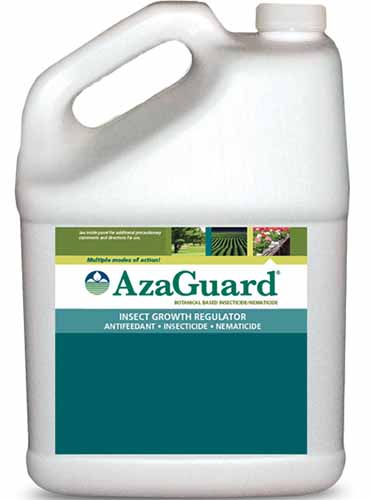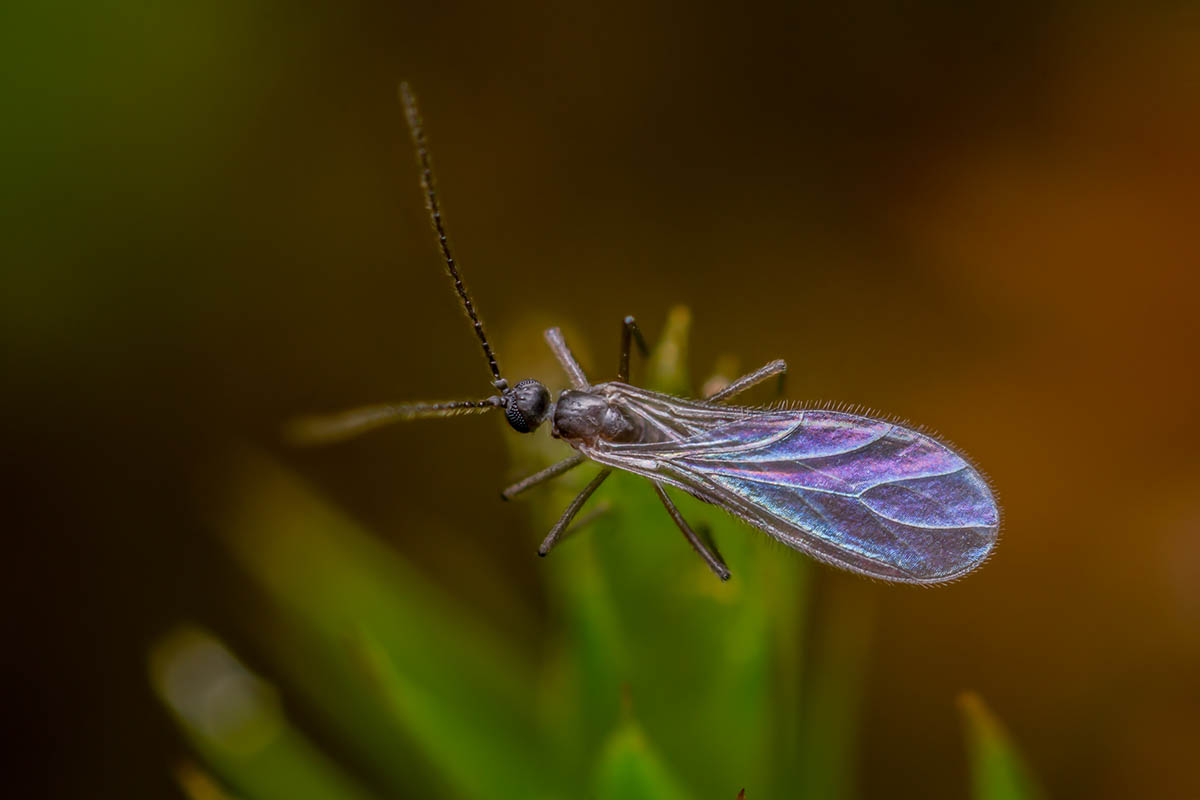And every spider plant parent can relate with the irritation of having to bat fungus gnat adults away from their face and the stress of stewing over how to rid their plant babies of the root-chewing maggots. We link to vendors to help you find relevant products. If you buy from one of our links, we may earn a commission.
1. Avoid Overwatering
This is the most important, and one of the first steps you can take in controlling fungus gnat numbers on your spider plants. Fungus gnats love saturated growing mediums, especially in a warm indoor environment. Wet medium is not only attractive to fungus gnat females looking for a place to lay their eggs, it’s the perfect environment for their maggots to thrive and grow up to become the next generation of annoying flies. Fungus gnat larvae typically hang out in the top two to three inches of medium, so allow the top few inches of the potting soil your plants are growing in to dry out between watering. Make sure your pot has drainage holes to allow extra water to flow out as well, preventing sodden soils. Not only is moist – not waterlogged – medium healthier for your spider plants, which are more resilient to maggot damage when given proper care, dry periods in between watering make the medium less attractive to the pests and less conducive to maggot development.
2. Keep Your Spider Plant Healthy
Speaking of resilient spider plants, healthy plants are much less likely to be affected by a few fungus gnat maggot nibbles. In general, spider plants enjoy medium to bright indirect sunlight, and temperatures of 65 to 75°F. Get more details about properly caring for spider plants in your home in our guide.
3. Repot Regularly and Cover Up
Sure, these tiny, quiet flies like peat moss-based mediums, but they love it even more when the potting mix is old and deteriorated. A lack of structure means more water retention, after all. You can test whether you need to repot by feeling the medium with your fingers. Try crumbling a small handful back into the pot. If the medium is no longer fluffy, soft, and full of chunks of various sizes, it might be time to repot.
4. Avoid Overfertilizing with Organic Material
Just like deteriorated peat moss is attractive to fungus gnats, other types of organic material are appetizing too as they begin to degrade in your houseplant’s container. Moisture will flow through this layer and leave a dry, unappealing surface on top. This will deter the females from laying their eggs there, as it is a less than ideal home for their babies. Mosser Lee Desert Sand Soil Cover Fungus gnat larvae normally feed on algae, fungi, and decaying organic matter, and only turn to plant roots when populations are large. So, rich sources of food like lots of manure, blood meal, or other fertilizer products high in organic matter are all too good for them to pass up. Similarly, remove any fallen debris, such as leaves, from the medium surface.
5. Monitor the Problem
Fungus gnats can go from a few to many very quickly. When that happens, competition between the larvae for food leaves them no choice but to turn to your spider plant roots. So keep an eye on the problem so you’ll know when it’s time to try a new or stronger tactic. Note that although sticky traps will help to catch adults, sometimes in significant numbers, they are not typically enough to eradicate the pests and eliminate the problem on their own. To successfully control fungus gnats, you’ll need to target them in their larval stage, which is the period before they can mate and lay more eggs. Houseplant Sticky Stakes These Houseplant Sticky Stakes, available from Home Depot, make good traps.
6. Employ Nematodes
Beneficial nematodes, such as Steinernema feltiae, which specialize in fungus gnats, are microscopic worms that sniff out the maggots by detecting carbon dioxide and larval movement. They enter the maggots’ bodies and release bacteria, which kills the larvae within three to four days. NemAttack Beneficial Nematodes These nematodes are available for purchase at Arbico Organics. Be sure to apply the nematodes after repotting, if you are trying that strategy as well. These nematodes will reproduce in the dead maggots and persist in the medium, controlling future fungus gnat generations, so you don’t want to throw them out with the old soil!
7. Try a Treatment
If altering the environment doesn’t quite do the trick, or you want to knock down populations before employing nematodes, try AzaGuard, available at Arbico Organics. AzaGuard A pesticide product that contains azadirachtin, it acts as both a repellant and as an insect growth regulator.
I’m a Spider Plant, Not a Gnat Plant
Your spider plants deserve to grow and light up your home in peace. Fungus gnats are one of those annoying types of insects that can become a problem if populations get out of control, so keeping the tips we talked about above in mind will give you a good head start. You’re now well on your way to avoiding future problems! And if an infestation is already in progress, these tips provide excellent methods to help you control the little flies too. Have you had a fungus gnat infestation on your spider plants? Let us know how you dealt with it in the comments section below! While you’re thinking about protecting your spider plants, it’s a great time to brush up on your understanding of these plants in other areas too, starting with these guides:
How to Revive a Wilting Spider PlantAre Spider Plants Toxic to Cats?Propagating Spider Plant Babies: 3 Methods to Root Spiderettes
